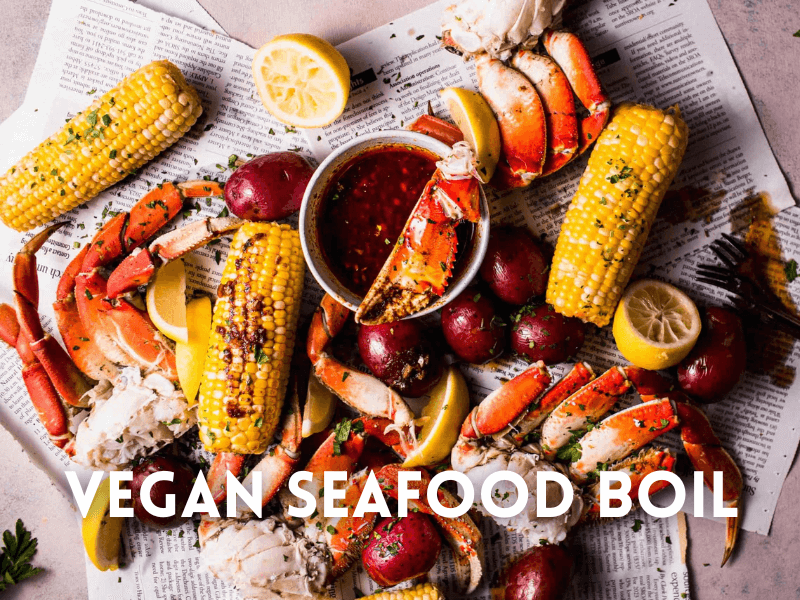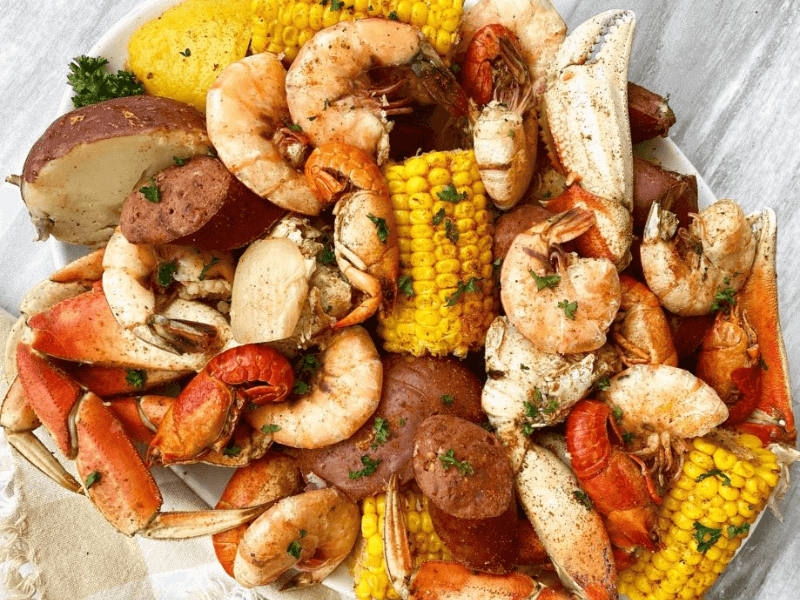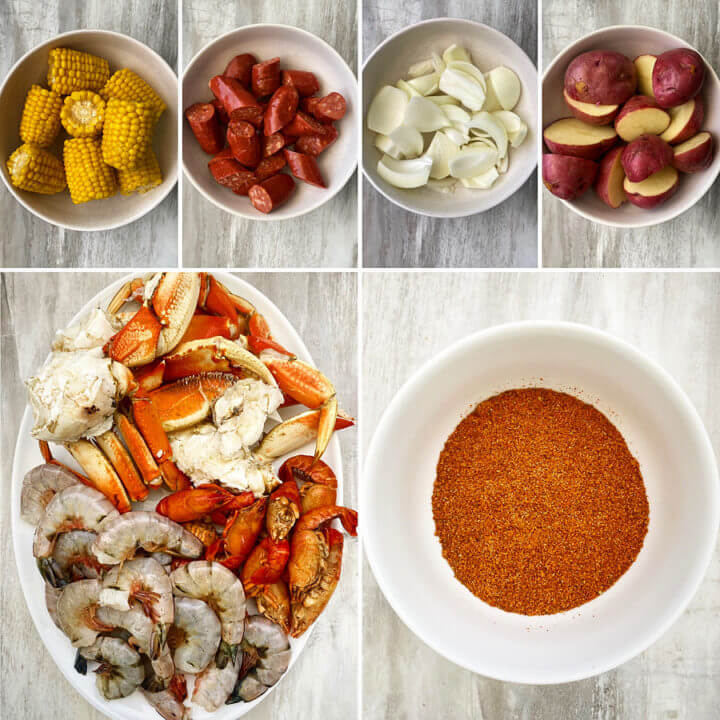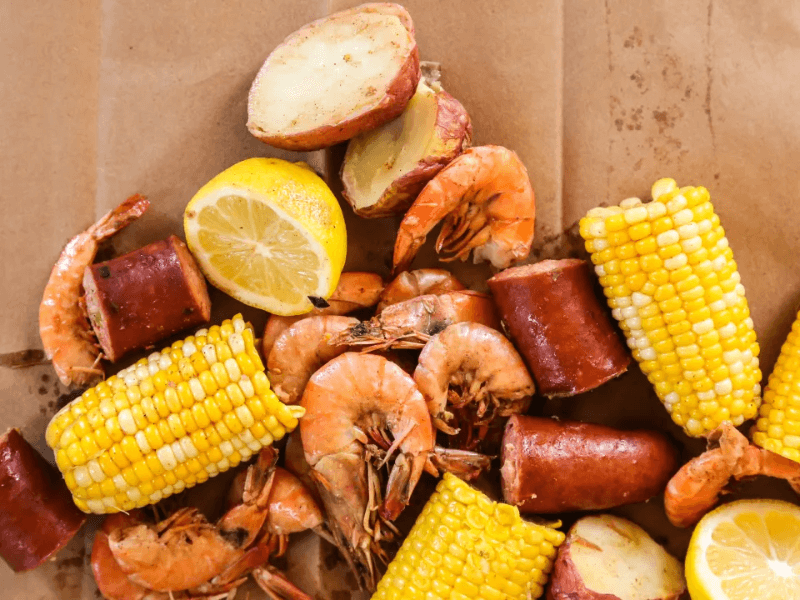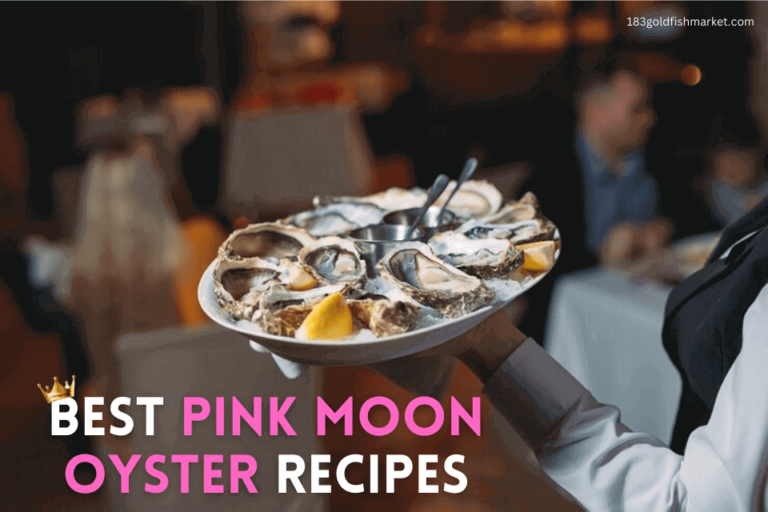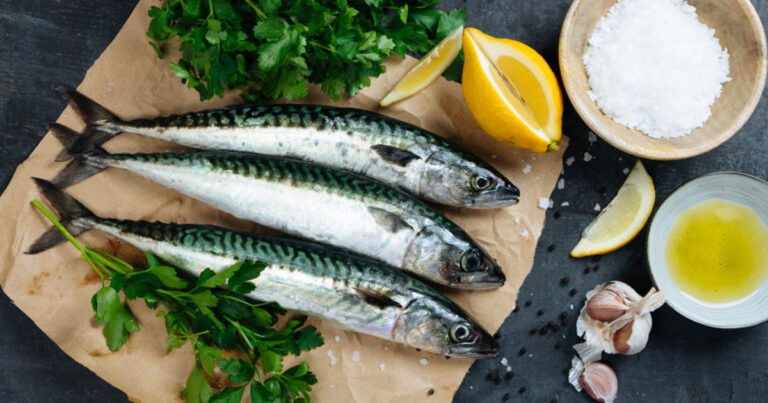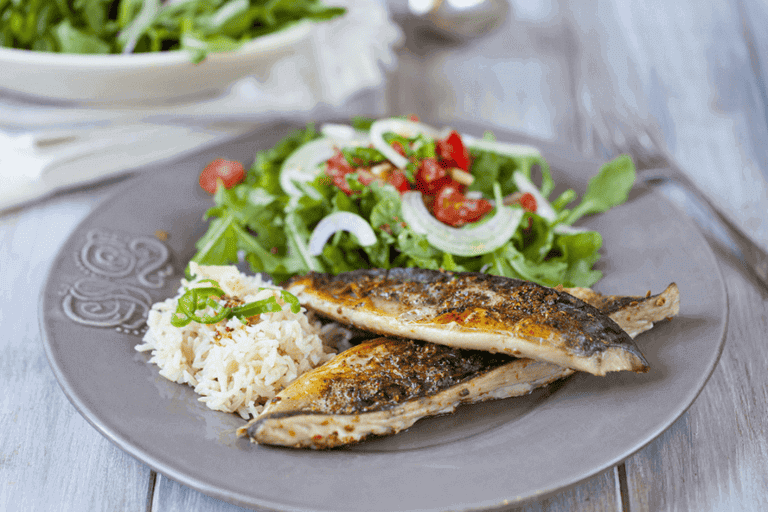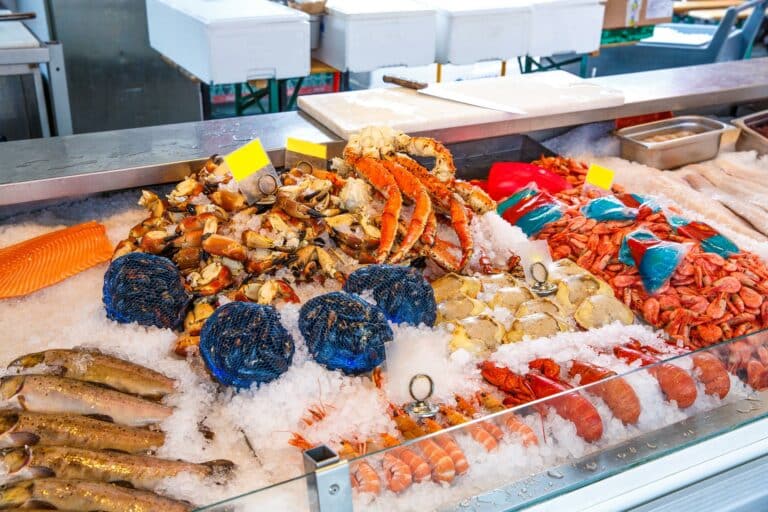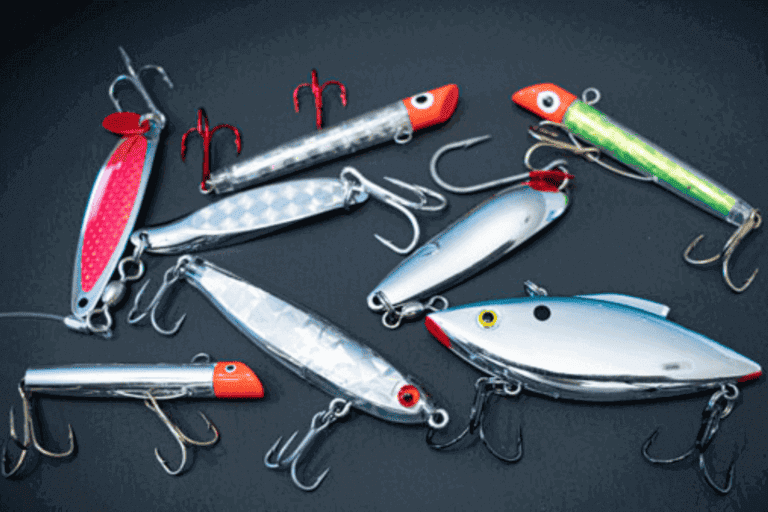Delicious Vegan Seafood Boil: A Plant-Based Twist on a Classic Dish
Introduction
A. The popularity of vegan seafood boils
Seafood boils have long been a beloved dish, especially in coastal regions. However, with the increasing popularity of plant-based diets, vegan seafood boils have emerged as a creative and flavorful alternative for those who choose to follow a vegan lifestyle. These plant-based versions capture the essence of the traditional seafood boil while incorporating delicious and sustainable ingredients.
B. The rise of plant-based diets
In recent years, there has been a significant rise in the number of people adopting plant-based diets. Whether motivated by health, environmental concerns, or ethical reasons, individuals are seeking out plant-based alternatives for their favorite dishes. Vegan seafood boils offer a fantastic opportunity to enjoy the flavors and textures associated with a traditional seafood boil while aligning with a plant-based lifestyle.
C. Introducing the vegan seafood boil
The vegan seafood boil is a culinary creation that replaces traditional seafood with plant-based substitutes, such as tempeh, seitan, and tofu. By combining these alternatives with a variety of vegetables and vegan seasonings, it’s possible to achieve a delicious and satisfying meal that appeals to both vegans and seafood enthusiasts.
Understanding the Traditional Seafood Boil
A. History and origins of the seafood boil
The seafood boil traces its roots back to the Southern United States, where it originated as a communal feast enjoyed by families and friends. This culinary tradition reflects the region’s rich seafood heritage and draws inspiration from Cajun and Creole cuisines. Over time, the seafood boil has gained popularity and spread to other parts of the country, becoming a staple dish for seafood lovers.
B. Ingredients typically used in a traditional seafood boil
A traditional seafood boil typically consists of shellfish like shrimp, crab, and crawfish, along with ingredients like corn on the cob, potatoes, and sausage. The flavors are enhanced with a blend of spices and seasonings, such as Old Bay seasoning, garlic, and cayenne pepper. The ingredients are cooked together in a large pot of boiling water, allowing the flavors to meld and infuse into the seafood.
C. Cooking methods and techniques
The traditional seafood boil is characterized by its cooking method, which involves boiling the ingredients in a seasoned broth. The seafood and accompanying vegetables are added to the pot at different stages to ensure proper cooking times. The result is a vibrant and flavorful dish that captures the essence of the ocean and the Southern culinary tradition.
The Concept of Vegan Seafood Boils
A. What is a vegan seafood boil?
A vegan seafood boil is a plant-based version of the traditional seafood boil. It replaces animal-based ingredients with plant-based alternatives while maintaining the flavors and textures that make the dish so appealing. The focus is on recreating the essence of a seafood boil using ingredients that align with a vegan diet.
B. Why choose a plant-based twist on this classic dish?
Opting for a plant-based twist on the classic seafood boil opens up the dish to a wider range of dietary preferences and restrictions. It allows individuals who follow a vegan lifestyle or have seafood allergies to experience the joy of a seafood-inspired feast. Moreover, choosing plant-based alternatives contributes to environmental sustainability by reducing the demand for seafood and supporting ethical practices.
C. Health and environmental benefits of a vegan seafood boil
A vegan seafood boil offers several health benefits compared to its traditional counterpart. Plant-based ingredients are generally lower in saturated fats and cholesterol, making the dish a heart-healthy option. Additionally, by incorporating vegetables and plant proteins, the vegan seafood boil becomes a nutrient-rich meal packed with vitamins, minerals, and dietary fiber. From an environmental standpoint, choosing plant-based alternatives helps reduce overfishing and the environmental impact associated with seafood production.
Essential Ingredients for a Vegan Seafood Boil
A. Plant-based alternatives to seafood
To create a vegan seafood boil, you’ll need plant-based alternatives that mimic the textures and flavors of seafood. Tempeh, seitan, and tofu are popular choices due to their versatility and ability to absorb flavors. Tempeh, made from fermented soybeans, has a firm texture and nutty flavor. Seitan, a protein-rich wheat gluten, offers a chewy and meat-like texture. Tofu, made from soybean curds, is known for its soft and absorbent qualities.
Selection and preparation of vegetables
In addition to the seafood substitutes, a variety of vegetables can be added to enhance the flavors and colors of the vegan seafood boil. Corn on the cob, potatoes, mushrooms, and other seasonal vegetables work well in the dish. It’s essential to choose fresh produce and clean and prepare them accordingly before adding them to the boil.
Vegan seasonings and spices
To infuse the vegan seafood boil with robust flavors, a blend of seasonings and spices is necessary. Old Bay seasoning, a classic choice for seafood boils, can be substituted with a vegan-friendly alternative or a homemade seasoning blend. Additional spices like garlic powder, paprika, cayenne pepper, and herbs like thyme and bay leaves can be incorporated to enhance the taste profile.
Step-by-Step Guide to Creating a Delicious Vegan Seafood Boil
A. Preparing the base and broth
Choosing the right broth
Select a vegetable-based broth or stock as the base for your vegan seafood boil. You can use store-bought options or make your own by simmering a mixture of vegetables, herbs, and spices. The broth forms the foundation of the dish, providing depth of flavor.
Incorporating umami flavors
To add richness and depth to the broth, consider incorporating umami-rich ingredients like dried mushrooms, soy sauce, miso paste, or nutritional yeast. These ingredients will help create a savory profile similar to that of a traditional seafood boil.
B. Selecting and preparing vegan seafood substitutes
Tempeh
Slice the tempeh into small, bite-sized pieces. Marinate it in a mixture of soy sauce, lemon juice, and your preferred seasonings to infuse it with flavor. The marinade will help the tempeh absorb the flavors and develop a delicious taste when cooked.
Seitan
If using store-bought seitan, rinse it under water to remove any excess brine. Cut the seitan into chunks or strips, depending on your preference. Alternatively, you can make your own seitan by combining vital wheat gluten with water or vegetable broth and seasonings, then boiling or baking it until cooked.
Tofu
Choose firm or extra-firm tofu for the vegan seafood boil. Press the tofu to remove excess moisture, then cut it into cubes or slices. You can marinate the tofu using a similar technique to the tempeh or directly add it to the boil for a milder flavor.
C. Adding vegetables and other ingredients
Corn on the cob
Peel back the husks of the corn, remove the silk, and rinse the corn cobs. Cut them into smaller pieces, if desired. The corn will contribute sweetness and a vibrant color to the vegan seafood boil.
Potatoes
Wash and scrub the potatoes before cutting them into chunks or wedges. The potatoes will provide heartiness and texture to the dish, absorbing the flavors of the broth and seasonings.
Mushrooms
Choose your favorite variety of mushrooms, such as cremini, shiitake, or oyster mushrooms. Clean them gently and remove any tough stems. Cut or tear them into bite-sized pieces to ensure even cooking and distribution of flavors.
Other vegetables and herbs
Feel free to experiment with additional vegetables and herbs based on personal preferences and seasonal availability. Some popular choices include bell peppers, onions, garlic, thyme, and bay leaves. These ingredients will contribute depth and complexity to the vegan seafood boil.
D. Cooking techniques and timings
Boiling, steaming, or grilling
Boiling is the traditional method for cooking a seafood boil. However, you can also adapt the cooking technique based on your preferences. Steaming the ingredients can help retain their natural flavors and textures, while grilling certain elements, such as corn on the cob, can add a delightful smoky char.
Monitoring cooking times
To ensure that all the ingredients are cooked to perfection, it’s important to monitor their cooking times. Start by adding the ingredients that require the longest cooking time, such as potatoes and corn, then gradually introduce the remaining components. This step-by-step approach ensures that each element reaches its ideal level of tenderness.
E. Assembly and presentation
Arranging the vegan seafood boil platter
Once all the ingredients are cooked, carefully remove them from the broth and arrange them on a large platter. Place the vegan seafood substitutes alongside the vegetables for an inviting presentation. Consider adding lemon wedges and fresh herbs as garnishes.
Garnishing and adding finishing touches
Drizzle some of the flavorful broth over the ingredients to enhance the taste. Sprinkle chopped parsley or green onions on top for a pop of color and freshness. Serve the vegan seafood boil family-style, encouraging guests to build their plates according to their preferences.
Pairing and Serving Suggestions
A. Vegan dipping sauces and condiments
Offer a variety of vegan dipping sauces and condiments to complement the flavors of the vegan seafood boil. Some popular options include vegan remoulade, tartar sauce, garlic aioli, or a tangy citrus vinaigrette. These sauces will add additional layers of taste and provide a customizable experience for diners.
B. Recommended side dishes and accompaniments
To round out the meal, consider serving the vegan seafood boil with a side of crusty bread or fluffy rice. The bread can be used to soak up the flavorful broth, while rice provides a neutral base for the vibrant flavors of the dish. A refreshing green salad or coleslaw can also serve as refreshing accompaniments.
C. Beverage pairings for a vegan seafood boil
Pair the vegan seafood boil with light and refreshing beverages that complement the flavors of the dish. Options include crisp white wines, such as Sauvignon Blanc or Pinot Grigio, or citrus-infused sparkling water for a non-alcoholic option. These choices will help cleanse the palate and enhance the overall dining experience.
Benefits and Considerations of a Vegan Seafood Boil
A. Nutritional benefits
A vegan seafood boil offers a range of nutritional benefits. Plant-based ingredients are typically lower in saturated fats and cholesterol while providing essential nutrients like protein, fiber, vitamins, and minerals. The dish incorporates a variety of vegetables, contributing to a well-rounded and nutrient-dense meal.
B. Allergen considerations
One of the advantages of a vegan seafood boil is that it eliminates common allergens like shellfish and dairy. This makes it suitable for individuals with seafood allergies, lactose intolerance, or other dietary restrictions. However, it’s important to be aware of potential allergens present in the vegan substitutes or seasonings used in the recipe.
C. Sustainability and ethical considerations
By opting for a vegan seafood boil, you contribute to environmental sustainability. Overfishing and destructive fishing practices can harm marine ecosystems, endanger species, and deplete fish populations. Choosing plant-based alternatives helps reduce the demand for seafood and supports more ethical and sustainable food choices.
Frequently Asked Questions (FAQs)
Q: Can I make a vegan seafood boil without gluten?
A: Yes, a vegan seafood boil can be made without gluten. Simply ensure that the vegan seafood substitutes and seasonings you choose are gluten-free. You can find gluten-free alternatives for tempeh, seitan, and tofu in many stores or make your own using gluten-free ingredients.
Q: How can I adjust the spice level to my preference?
A: The spice level of a vegan seafood boil can be easily adjusted to suit individual preferences. Increase or decrease the amount of cayenne pepper or other spices in the seasoning blend according to your desired level of heat. Additionally, you can offer hot sauce or chili flakes as optional condiments for those who enjoy an extra kick of spice.
Q: Are there any alternative ingredients for those with allergies?
A: For individuals with specific allergies, there are various alternatives available. If someone has a soy allergy, they can opt for soy-free options like mushrooms, artichoke hearts, or heart of palm as seafood substitutes. For gluten allergies, ensure you choose gluten-free vegan seafood substitutes and seasonings.
Q: Can I make a vegan seafood boil ahead of time?
A: While it’s best to serve vegan seafood boil fresh, certain components can be prepared ahead of time to save cooking time. You can pre-cut vegetables, marinate the vegan seafood substitutes, and make the broth in advance. However, assemble and cook the dish just before serving to ensure optimal flavors and textures.
Q: How long does a vegan seafood boil typically take to prepare?
A: The preparation time for a vegan seafood boil can vary depending on the complexity of the recipe and the cooking techniques used. On average, it takes approximately 45 minutes to 1 hour to prepare the ingredients and cook the dish. However, this may vary based on the number of guests, the size of the pot, and individual cooking proficiency.
Conclusion
The vegan seafood boil offers a delightful and plant-based twist on the classic seafood boil. By replacing seafood with delicious alternatives and incorporating a variety of vegetables, the dish captures the essence of a traditional boil while accommodating dietary preferences and ethical considerations.
The beauty of a vegan seafood boil lies in its versatility. Feel free to experiment with different vegan seafood substitutes, vegetables, and seasonings to create your own unique version of this flavorful dish. Allow your creativity to shine and adapt the recipe to suit your preferences and the availability of ingredients.
